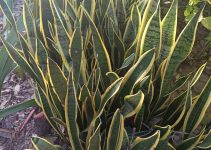Comfrey
Symphytum spp.
Comfrey leaves are full of nutrients that make a natural high-potassium fertilizer or addition to compost. This perennial herb sends down deep roots that pull nutrients into the plant’s large, hairy leaves. It grows best in moist sites high in organic matter. Common comfrey, Symphytum officinale, is a vigorous plant that can grow up to 4 feet tall. The plant spreads by rhizomes and can become invasive.
Type: Herb
Height: 3 to 8 feet
Width: To 4 feet wide
Flower color: Blue, Purple, White
Seasonal features: Spring bloom
Problem solvers: Deer resistant
Special features: Attracts birds, Cut flowers, Good for containers, Low maintenance
Zones: 3-9
Growing the Comfrey Plants
Originating in the Caucasus mountains of Russia, Comfrey can withstand temperatures of -40° F below zero without winter kill. It thrives in Africa in 120° F heat and with 12 cuttings per year there, they hold the world record yield of over 140 tons per acre.
Comfrey grows best in USDA Hardiness Zones 3-9. But will grow almost anywhere. Comfrey prefers a sweet soil with a pH of 6.0-7.0 and grows best in rich, moist soil in full sun, but will tolerate some shade. It will grow well in clay, light sands or loams — whether in dry or wet areas. Strong growing and deep- rooted, Comfrey adapts well to most any environment.Comfrey can be planted spring, summer or fall, anytime the soil can be worked. In warmer climates, (Deep South and Southwest USA) it can be planted and the leaves harvested throughout the year.
Because the Bocking #4 is so deep rooted, it will thrive in drought where most other plants are helpless. We do not sell the Bocking #14 strain of Comfrey as “it is shallow rooted and subject to drought,” and “it is disliked by rabbits and chickens — as being too bitter” according to Lawrence D. Hills, the world’s foremost expert on Comfrey.
Plant Comfrey in “fertile holes” to get established and it will thrive and live even through the hottest Summer or coldest Winter. Comfrey needs a 3 foot spacing for proper root development and highest yields. Strong, mature plants on a 3 foot grid will have the larger outside leaves touching the adjacent plants after 4 to 5 weeks growth.
Comfrey can also be grown indoors, in pots (1 to 5 gallon size) for a continuous harvest of fresh, small leaves. For this purpose best results are obtained by planting two-year or 3-to-4-year plants in the larger pots or 5- gallon buckets.

